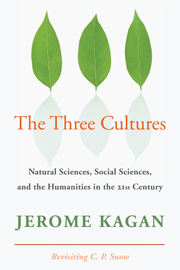Preface
Published online by Cambridge University Press: 07 August 2009
Summary
On a gray March afternoon in 2006 I saw a copy of C. P. Snow's The Two Cultures on a shelf above the location of the two books I was searching for in the cavernous Widener Library at Harvard. Recalling the debate it provoked when published more than fifty years ago, and aware that I was looking for a theme to probe during the coming summer, I added it to the pair of books I had come to borrow. After reading Snow's essay the following weekend, it became clear that the changes in the sciences and research universities over the past half-century had rendered Snow's analysis a bit archaic, and a comparison of his views with the current reality seemed to be a worthwhile pursuit.
The most obvious change was the ascent of big science projects in physics, chemistry, and molecular biology that required expensive machines and teams of experts with varied talents and motives. The typical scientist during my graduate years went to the basement of the university building where the shop was housed and constructed himself, or had built by the department's technician, whatever apparatus was required for an experiment designed and run by the faculty member or with the help of a graduate student who assisted with the gathering and analysis of the evidence and the writing and rewriting of a paper reporting an interesting result. Two minds and four hands, often with no outside funds, performed all the work.
- Type
- Chapter
- Information
- The Three CulturesNatural Sciences, Social Sciences, and the Humanities in the 21st Century, pp. vii - xiiPublisher: Cambridge University PressPrint publication year: 2009
- 1
- Cited by

